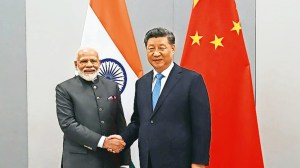Plan for an end
The artificial distinction between Plan and non-Plan spending has endured too long.
One of the most baffling distinctions in Indian public finance is that between Plan and non-Plan expenditure. Fittingly for a holdover from Indias socialist past,the meaning and effect of this distinction has changed over time,become ossified and malign. The original idea was that Plan expenditure would be spending imagined and directed through the Five-Year Plan,and thus,theoretically a governments expenditure on growth. Non-Plan expenditure would be other forms of spending; which lent itself easily to a persistent Plan is Good and non-Plan is Bad caricature. Naturally,this caricature grew ever more distant from the truth. Plan expenditure might cover the expense of a new canal system. But maintaining it could well become part of non-Plan expenditure. When combined with the pressure to appear to be spending on good things,and thus an effort to shrink non-Plan expenditure arbitrarily relative to Plan spending,India wound up paying through the nose for canals that became clogged and useless soon. Indias landscape of shoddy,half-maintained public infrastructure owes no small debt to this misguided categorisation. Additionally,new schemes bulk up Plan spending for a year; old schemes dont. Which is why our policy landscape is littered with old initiatives falling into disuse while new ones are designed,lauded and launched.
The exact nature of Plan and non-Plan spending no longer even overlaps conveniently with capital and current expenses. In effect,any spending routed through the Planning Commission is Plan expenditure. This administrative distinction is insufficiently valuable to compensate for the enormous distortions the artificial division of expenditure has caused. It is welcome,therefore,that the PC itself seems amenable to the idea of phasing out the socialist-era division. A report from the economic advisory committee to the prime minister has suggested that the Plan/ non-Plan distinction be done away with,and has recommended various other reforms to minimise the last-mile policy distortions it has already caused. This could mean a great deal of infrastructure expenditure,for example,is no longer monitored from the PC but from the finance ministry. The PC is behind the idea; it is refreshing to see a large statutory body in Delhi gladly reshaping its power and responsibilities for a new era.
The reform of expenditure should go along with re-examining the effectiveness of infrastructure spending,involving careful evaluation of outcomes,not input; and the creation of strong and independent regulatory bodies for infrastructure sectors. Twenty years since reform began,these are useful and overdue changes.
Photos


- 01
- 02
- 03
- 04
- 05




























